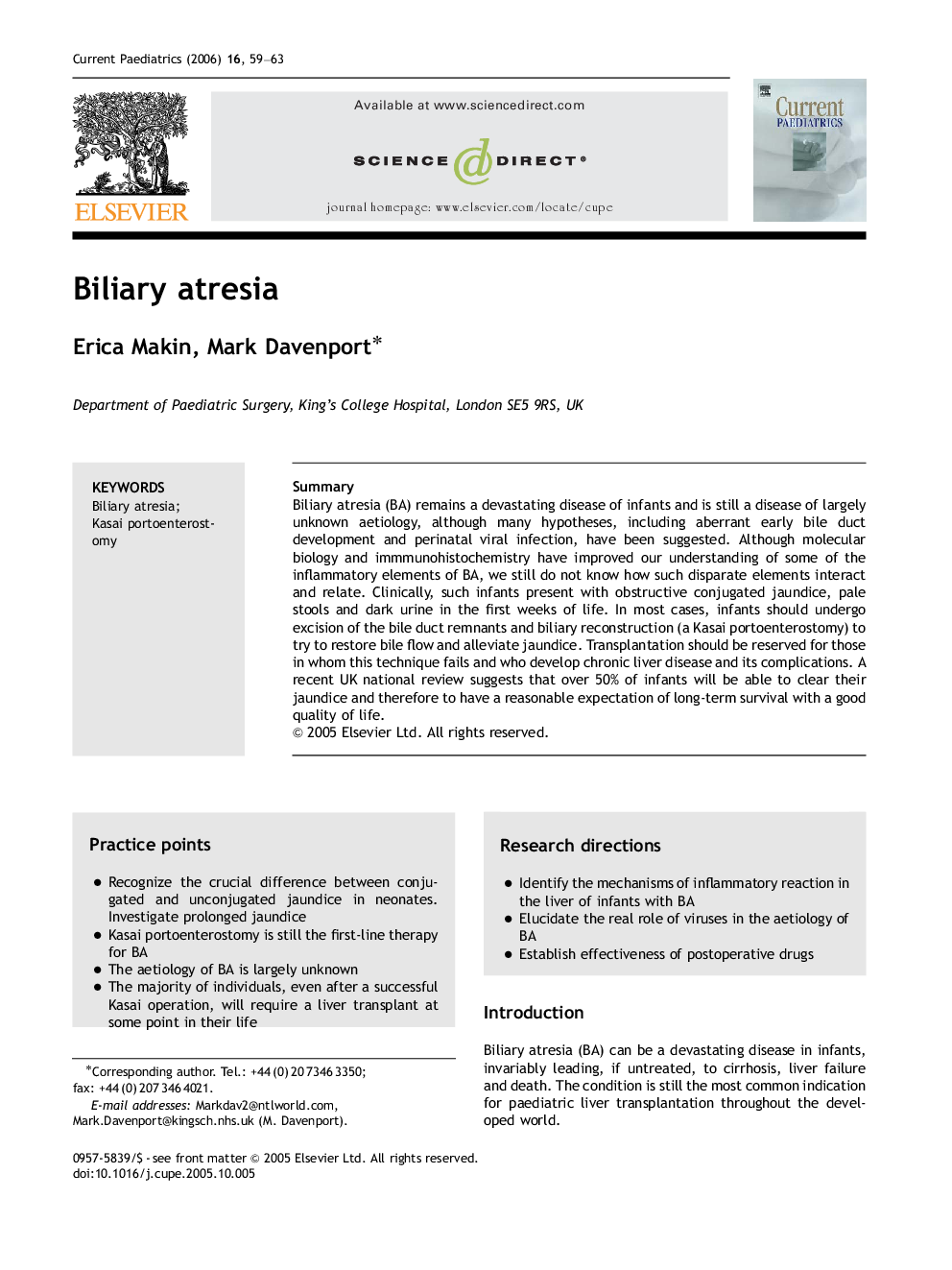| Article ID | Journal | Published Year | Pages | File Type |
|---|---|---|---|---|
| 4152315 | Current Paediatrics | 2006 | 5 Pages |
SummaryBiliary atresia (BA) remains a devastating disease of infants and is still a disease of largely unknown aetiology, although many hypotheses, including aberrant early bile duct development and perinatal viral infection, have been suggested. Although molecular biology and immmunohistochemistry have improved our understanding of some of the inflammatory elements of BA, we still do not know how such disparate elements interact and relate. Clinically, such infants present with obstructive conjugated jaundice, pale stools and dark urine in the first weeks of life. In most cases, infants should undergo excision of the bile duct remnants and biliary reconstruction (a Kasai portoenterostomy) to try to restore bile flow and alleviate jaundice. Transplantation should be reserved for those in whom this technique fails and who develop chronic liver disease and its complications. A recent UK national review suggests that over 50% of infants will be able to clear their jaundice and therefore to have a reasonable expectation of long-term survival with a good quality of life.
